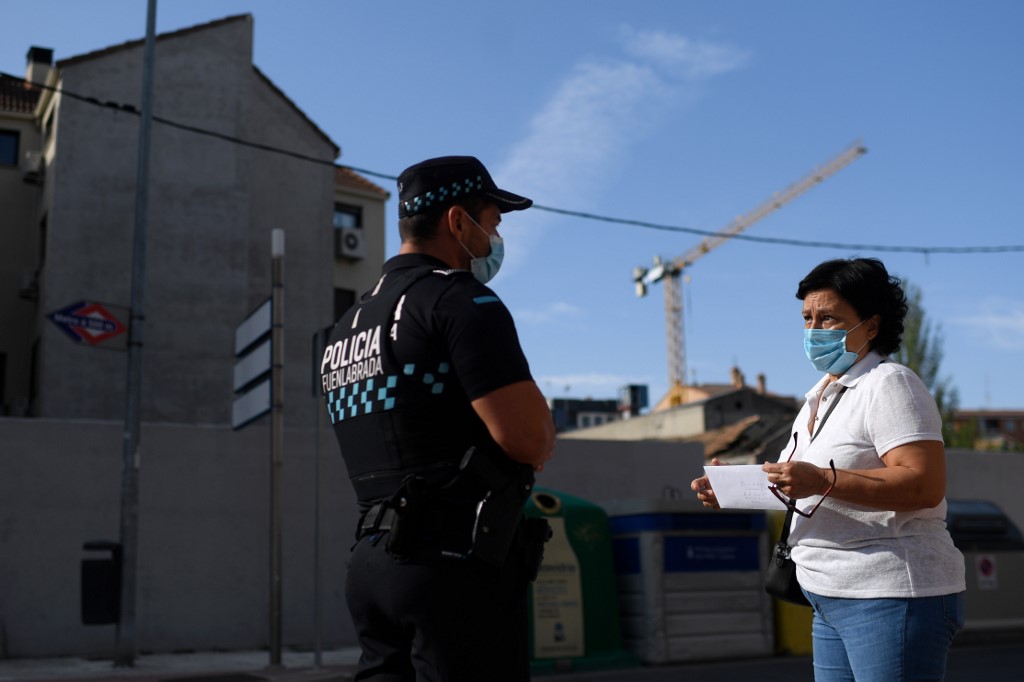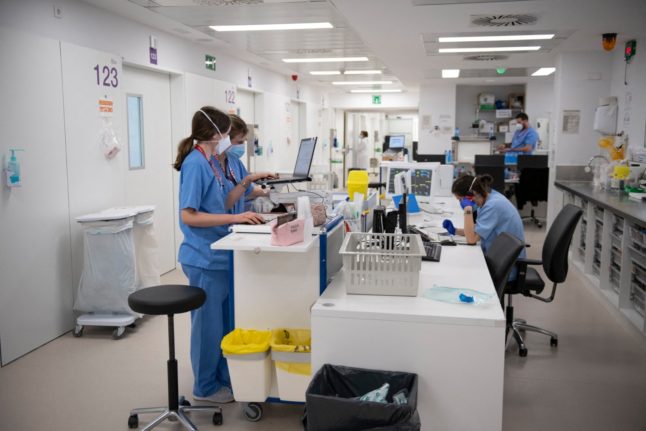The proposal, which won the overall agreement of regional authorities, aims to place new restrictions on movement and limit social gatherings in those areas where coronavirus is spiralling out of control.
The new measures have been unveiled just days after Spain's government warned the Madrid authorities of drastic measures if the region failed to move decisively to slow the uncontrolled spread of coronavirus infections.
What are the criteria?
The document sent to the Inter-territorial Health Committee for discussion on Wednesday afternoon sets out the criteria for all cities in Spain that have a population of at least 100,000 residents.
It states that a municipality must impose new restrictions if all of three conditions are met and these are: if the cumulative incidence of Covid-19 over 14 days rises above 500 cases per 100,000 inhabitants; if more than 10 percent of PCR tests conducted in the zone are confirmed positive and if a threshold of 35 percent of intensive care beds are occupied by coronavirus patients.
“This agreement has been approved by a broad majority,” said Health Minister Salvador Illa after consultations with Spain's 17 autonomous regions, who are responsible for public healthcare and managing the pandemic.
What then?
If a regional health authority detects that a municipality has met the criteria then it must impose selective confinement of the zone “within 48 hours”.
What are the restrictions?
The restrictions are broadly along the lines of those that have already been imposed in hard-hit areas of Spain, including 45 health zones in Madrid.
Basically, it requires residents to stay within the restricted zone unless they have to travel outside it for work, study, or take children to school.
Exceptions are also made for those who have to visit dependents, seek medical attention or attend a legal or administrative appointment.
Bars and restaurants will remain open but at half the capacity that they are normally allowed, 60 percent on terraces and no service at the counter and they must shut by 11pm. Home delivery is allowed.
Shops and commercial premises can continue to remain open but with 50 percent of occupancy and must close by 10pm.
All social groups must not exceed six people both within the home and in public places unless it is in a work or institutional environment.
Exceptions are made for household that contain more than 6 people.
The initial draft suggested that within restricted zones parks and public spaces such as playgrounds are closed but this appears to have revised and the measure is not included in the final notice published on the BOE (Offical State Gazette)
Cinemas, theatres, libraries and sports centres will remain open but limited to 50 percent of capacity.
While the capacity at religious sites will be cut to one-third and funeral attendees reduced to 15 people in outdoor spaces and 10 indoors.
The usual social distancing rules and compulsory mask wearing will remain in place.
Traffic will be permitted to pass through the restricted area as long as it is only in transit and its departure and destination points are outside of the restricted zone.
READ ALSO: Rules, permits, fines: What you need to know if you live within Madrid’s new confinement zones

Where in Spain are the new restrictions likely to be applied?
The city of Madrid and eight other municpalities within the Community of Madrid are the only municpalities that currently meet the criteria for confinement.
These are Fuenlabrada, Parla, Alcobendas, Torrejón de Ardoz, Getafe, Leganés, Móstoles and Alcalá de Henares.
? MAPA | Fuenlabrada, Parla, Alcobendas, Torrejón de Ardoz… Las únicas diez ciudades españolas afectadas por los criterios de Sanidad para aplicar restricciones están en Madrid
Aquí lo puedes consultar https://t.co/ei8ggY2tBZ
— elDiario.es (@eldiarioes) September 30, 2020
Data pubished by the Health Ministry on Tuesday September 29th shows that the capital has a 14-day cumulative incidence of Covid-19 currently averaging 789 cases per 100,000 inhabitants, more than double the national average of 294 across Spain.
The only other city in Spain currently at risk is Pamplona in Navarra, but although its cumulative incident rate of 685.71 cases per 100,000 is above the 500 threshold, the percentage of coronavirus patients currently treated in ICU in the city's hospitals falls below the 35 percent threshold at 22 percent.
48 hour deadline
Madrid authorities have until Friday at 10.48pm to enforce the restrictions in the capital and other municpalities within the region that meet the criteria.
Madrid reluctant to comply
However, Madrid health authorities are at odds with the Spanish government over the new plan but on Thursday morning said they would comply with the orders but still fight it through the courts.
Madrid regional president Isabel Diaz Ayuso told the regional assembly on Thursday she had no choice but to follow the lockdown – even though she would mount a legal challenge.
“This region is not in rebellion and will strictly comply with all the orders,” she said. “But yes, we will go to the courts … to stand up for the rights of the Madrilenos.”
Over the past ten days, the Madrid authorities have placed around a million people under partial lockdown, but the measures have fallen well short of the central government's demands, triggering the current proposal.
READ MORE: Madrid authorities fight government orders to confine capital



 Please whitelist us to continue reading.
Please whitelist us to continue reading.
Member comments